 Challenging the Safety Quo Safety is broken. The people who are responsible for helping you stay safe should be at the top of your Christmas card list, but all too often they are despised, ridiculed and ignored. But safety management is beginning to be challenged. Businesses have begun to realise that what they have been doing is no longer providing any additional value. The same issues are repeatedly raised by corporate leadership: Howdowegetourworkforceengagedinsafety? How do we improve safety systems to gain commitment from all employees? Howdoweimprovesafetyunderstandingtomakethecaseforchange? Howdoweembedsafetyasanintegralpartofcultureinanenvironment ofongoingchangeandcostpressure? Challenging the Safety Quo makes the case for change based on stagnating per formance, identifies areas where there are problems and proposes alternative ways to progress. Provocative but practical, it outlines the business benefits to be gained from putting in place the right approaches to managing safety, although not in the way traditionally presented by most safety managers.
Challenging the Safety Quo Safety is broken. The people who are responsible for helping you stay safe should be at the top of your Christmas card list, but all too often they are despised, ridiculed and ignored. But safety management is beginning to be challenged. Businesses have begun to realise that what they have been doing is no longer providing any additional value. The same issues are repeatedly raised by corporate leadership: Howdowegetourworkforceengagedinsafety? How do we improve safety systems to gain commitment from all employees? Howdoweimprovesafetyunderstandingtomakethecaseforchange? Howdoweembedsafetyasanintegralpartofcultureinanenvironment ofongoingchangeandcostpressure? Challenging the Safety Quo makes the case for change based on stagnating per formance, identifies areas where there are problems and proposes alternative ways to progress. Provocative but practical, it outlines the business benefits to be gained from putting in place the right approaches to managing safety, although not in the way traditionally presented by most safety managers.
This book translates theory into practice; putting an accessible, practical and usable spin on cutting- edge thinking in safety. Craig Marriott is a senior safety professional with over 25 years experience managing safety in high- hazard industries. From nuclear submarines and highly radioactive waste, to high- pressure gas pipelines and oil rigs, he has written safety cases and managed safety for some of the worlds most hazard ous operations. Craig specialises in providing safety leadership advice to organisations across the world and has worked with companies in the US, Canada, Europe, Middle East and Asia Pacific. Craig provides a refreshing perspective, moving past the bluster and pointing toward a more productive future for safety management. Ron Gantt, Vice President, SCMChallenging the Safety QuoCraig Marriott First published 2018 by Routledge 2 Park Square, Milton Park, Abingdon, Oxon OX14 4RN and by Routledge 711 Third Avenue, New York, NY 10017 Routledge is an imprint of the Taylor & Francis Group, an informa business 2018 Craig Marriott The right of Craig Marriott to be identified as author of this work has been asserted by him in accordance with sections 77 and 78 of the Copyright, Designs and Patents Act 1988. Ron Gantt, Vice President, SCMChallenging the Safety QuoCraig Marriott First published 2018 by Routledge 2 Park Square, Milton Park, Abingdon, Oxon OX14 4RN and by Routledge 711 Third Avenue, New York, NY 10017 Routledge is an imprint of the Taylor & Francis Group, an informa business 2018 Craig Marriott The right of Craig Marriott to be identified as author of this work has been asserted by him in accordance with sections 77 and 78 of the Copyright, Designs and Patents Act 1988.
All rights reserved. No part of this book may be reprinted or reproduced or utilised in any form or by any electronic, mechanical, or other means, now known or hereafter invented, including photocopying and recording, or in any information storage or retrieval system, without permission in writing from the publishers. Trademark notice: Product or corporate names may be trademarks or registered trademarks, and are used only for identification and explanation without intent to infringe. British Library Cataloguing in Publication Data A catalogue record for this book is available from the British Library Library of Congress Cataloging in Publication Data Names: Marriott, Craig, author. Title: Challenging the safety quo / Craig Marriott. | Includes bibliographical references and index. | Includes bibliographical references and index.
Identifiers: LCCN 2017036688| ISBN 9781138558748 (hardback) | ISBN 9781138558762 (pbk.) | ISBN 9781315151397 (ebook) Subjects:LCSH:IndustrialsafetyManagement. Classification:LCCT55.M35552018|DDC658.4/08dc23 LC record available at https://lccn.loc.gov/2017036688 ISBN: 978-1-138-55874-8 (hbk) ISBN: 978-1-138-55876-2 (pbk) ISBN: 978-1-315-15139-7 (ebk) Typeset in Bembo by Wearset Ltd, Boldon, Tyne and Wear Contents vi Contents On 19 November 2010, an explosion ripped through the Pike River Mine in the South Island of New Zealand. A second followed soon after. Twenty- nine men died. Fathers. Sons. Sons.
In any such disaster, more lives are ruined than those that are taken directly. In a small community such as this, the impact was particularly dev astating (Macfie, 2013). The disaster triggered a response that had a much broader impact than simply on this mine or this industry. The safety record of New Zealands industry was already under scrutiny due to perceived poor performance in comparison with other developed countries. In the wake of Pike River, industry scrutiny gave way to a public clamour for change, for improvement and for accountability. The govern ment duly obliged.
An independent task force was established to review industry performance across all sectors. A Royal Commission investigated the Pike River tragedy. The regulator was shaken up, given more independence and more resources. Legislation was changed. Targets were set and promises made. It took five and a half years for new legislation to be enacted and come into force.
Will it work? Who knows? Perhaps (and hopefully) it will, but history suggests otherwise. Similar, previous tragedies triggered similar responses and similar issues are playing out all around the world as various governments and agencies attempt to come to grips with the problem. In the UK, Flixborough prompted changes in the 1970s; Piper Alpha prompted changes in the 1980s. Union Carbides facility in Bhopal provoked a similar outcry. And there are many others Texas City, Longford, Deepwater Horizon, Chernobyl, Seveso So this has happened over and again, for the last 40 years. Yet here we are, still failing to provide safe workplaces for our colleagues.
Nor is this confined to major disasters with multiple fatalities. While general accident rates across industry have been in general decline for some time, serious injuries and fatal ities have not shown a similar reduction either reducing much more slowly, plateauing or, in some cases, increasing. 4 Introduction Why is that? Based on the rhetoric after each tragedy, these issues should be sorted out by now: We must do better; bad practices will be weeded out and poor perform ers prosecuted under the new laws We will look further and delve deeper to root out the bad apples We will hold up, reward and recognise good performers; identify best practices and share them. But, do we actually know what best practices look like? What if our current view of what is good is completely wrong? What if were looking in all the wrong places? These questions are currently being asked and the safety status quo the safety quo is being challenged. Unseen by most of the outside world, there is a debate raging in the safety profession. In online forums, at conferences, seminars and in safety publications, people are beginning to question some of the most well- established principles of safety management.
Safety as a profes sion is going through a mid- life crisis. Some of the theories behind these challenges are well developed, particularly in academia, but in industry many organisations are very much behind the times and havent yet got up to speed. Other theories are cutting edge and leading to howls of indignation from defenders of the safety quo, but are gradu ally gaining support as a few lone voices become a groundswell of opinion. This change is needed because the truth is that safety is broken. There are pockets of excel ence, there are good- quality people working very hard and with the best of intentions. We have made significant progress since the days when major projects budgeted for a certain number of fatalities.
Next page

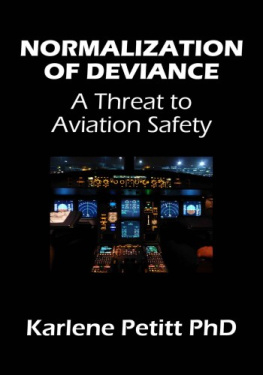
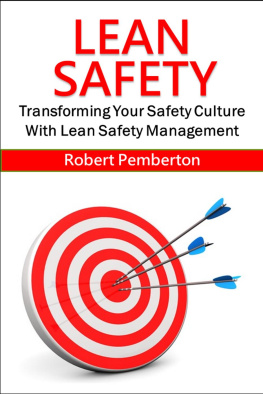
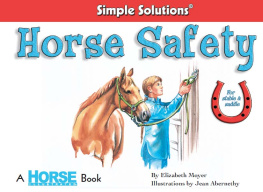
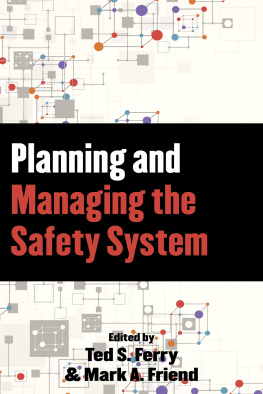
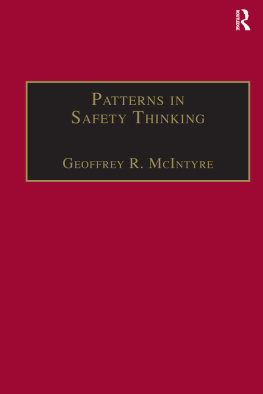
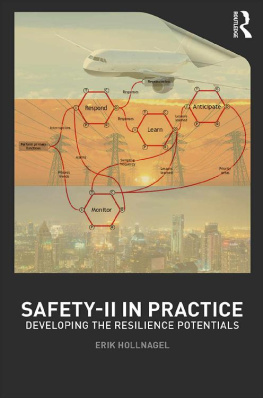
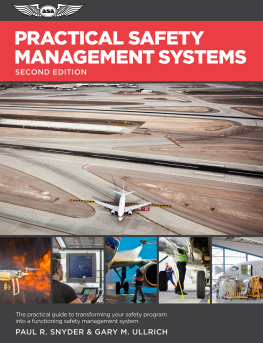
 Challenging the Safety Quo Safety is broken. The people who are responsible for helping you stay safe should be at the top of your Christmas card list, but all too often they are despised, ridiculed and ignored. But safety management is beginning to be challenged. Businesses have begun to realise that what they have been doing is no longer providing any additional value. The same issues are repeatedly raised by corporate leadership: Howdowegetourworkforceengagedinsafety? How do we improve safety systems to gain commitment from all employees? Howdoweimprovesafetyunderstandingtomakethecaseforchange? Howdoweembedsafetyasanintegralpartofcultureinanenvironment ofongoingchangeandcostpressure? Challenging the Safety Quo makes the case for change based on stagnating per formance, identifies areas where there are problems and proposes alternative ways to progress. Provocative but practical, it outlines the business benefits to be gained from putting in place the right approaches to managing safety, although not in the way traditionally presented by most safety managers.
Challenging the Safety Quo Safety is broken. The people who are responsible for helping you stay safe should be at the top of your Christmas card list, but all too often they are despised, ridiculed and ignored. But safety management is beginning to be challenged. Businesses have begun to realise that what they have been doing is no longer providing any additional value. The same issues are repeatedly raised by corporate leadership: Howdowegetourworkforceengagedinsafety? How do we improve safety systems to gain commitment from all employees? Howdoweimprovesafetyunderstandingtomakethecaseforchange? Howdoweembedsafetyasanintegralpartofcultureinanenvironment ofongoingchangeandcostpressure? Challenging the Safety Quo makes the case for change based on stagnating per formance, identifies areas where there are problems and proposes alternative ways to progress. Provocative but practical, it outlines the business benefits to be gained from putting in place the right approaches to managing safety, although not in the way traditionally presented by most safety managers.